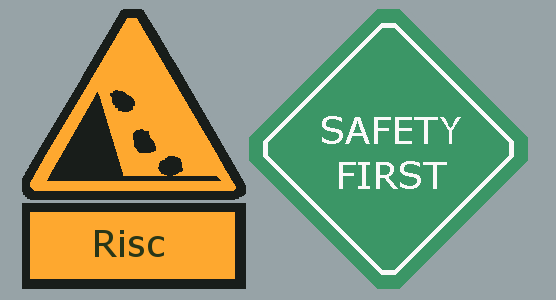Risc management
Education at georgssons.com
Published: 2021-11-12
Updated: 2023-02-24
Introduction
Learn to calculate risc and put it in relation to how much money you are prepared to risc when saving in shares

Why risc management
The purpose of risc management is to avoid losing all your capital.
Risc comes from not knowing what you are doing
One of the most famous quotes from Warren Buffet is that “Risc comes from not knowing what you are doing”
Risc is information that we use to make investment decisions. If we assess that the risc is high per share, we buy fewer shares than we buy if we assess that the risc is low per share.
Set rules for risc
No one else sets the framework for your activity on the stock exchange and it is important to decide in advance which rules apply. Otherwise, you could risc more money than you intended to.
- How much money are you willing to risc on the stock market in total??
- How much money do you want to risc in each company?
- How much money do you want to risc in a single trade?
- Can you be without the money for a while if it becomes difficult to sell at the right price?
Answer the questions and you have the beginning of a plan for your actions on the stock exchange.
The loss must be a maximum of 100%
When trading shares, the loss can be 100% while the profit can be several 100%. If you avoid borrowing money to buy shares, the bet becomes what you risc and rarely do shares become completely worthless.
Far from all companies provide a value increase of several 100%. The chances are greater with early investments and at the same time the riscs are higher than when the company is established.
Calculate risc
Calculating risc provides an opportunity to compare investments and choose a deal with a relationship between risc and possible profit at a target price that suits one's own willingness to take riscs.
There is uncertainty in the calculations because both risc and possible profit at the target price are based on assumptions about future price development. The more experience we gain, the more reasonable assumptions about risc and possible profit at the target price we can make.
Calculate number of shares
The risc we are willing to take in an individual transaction limits how many shares we can buy. The amount we are willing to risc is divided by the risc we have assessed for one share and then we get to know how many shares we can buy.
We take an example. If we are willing to risc SEK 500 on an investment and have assessed that the risc is SEK 5 per share, this gives room to buy 100 shares. The total risc of SEK 500 is divided by the risc per share, which is SEK 5. Then we get that:
SEK 500 / SEK 5 / share = 100 shares
Risc and possible profit at target price
Risc and possible profit at target price is about putting the risc taken in relation to the profit that is created if the share reaches its intended target price.
Starting price
Starting price is the share price when the calculation is made.
Risc
Risc is the difference between the starting price and an estimated lower target price for the share if the company does not succeed in creating growth.
Target price
Target price is an estimated future share price and can be calculated. Divide the estimated future market value by the number of shares.
Profit at target price
Profit at target price is the difference between target price and starting price.
Example of calculating risc in relation to possible profit at target price with half the starting price as risc
If a share costs SEK 10 and we think it can decrease to SEK 5 or increase to SEK 30, we risc SEK 5 for the chance to win SEK 20.
Starting price: SEK 10
Risc: SEK 10 - SEK 5 = SEK 5
Target price: SEK 30
Possible profit at target price: SEK 30 - SEK 10 = SEK 20
Relationship between possible profit at target price and risc: SEK 20 / SEK 5 = 4 / 1
For every 1 SEK risced, we have the chance to win four SEK.
Risc diversification
By investing in several companies' shares, the riscs can be spread. A company's share that performs very well can compensate for several other companies' shares that perform worse.
Imagine you are buying one share in each of five companies. Everyone has a share price of SEK 100 when you trade. The five companies develop differently and this is reflected in the share price.
- Company A is doing very badly and the share price is falling from SEK 100 to SEK 10.
- Company B is doing badly and the share price falls from SEK 100 to SEK 50.
- Company C is neither good nor bad and the share price stays around SEK 100.
- Company D is doing well and the share price is rising from SEK 100 to SEK 150.
- Company E is doing very well and the share price is rising from SEK 100 to SEK 1 000.
The sum of all five investments with SEK 500 invested will be SEK 10 + SEK 50 + SEK 100 + SEK 150 + SEK 1 000 = SEK 1 310.
If you had invested the entire sum in company A, you would have had SEK 50 left of your invested SEK 500.
Summary
Risc management in our introduction to the subject can be summarized as follows:
- Set rules for risc and follow the rules.
- Calculate risc and the number of shares corresponding to the risc.
- Calculate risc och möjlig vinst vid målkurs.
- Choose a risc that suits your risc appetite.
- Spread your riscs.